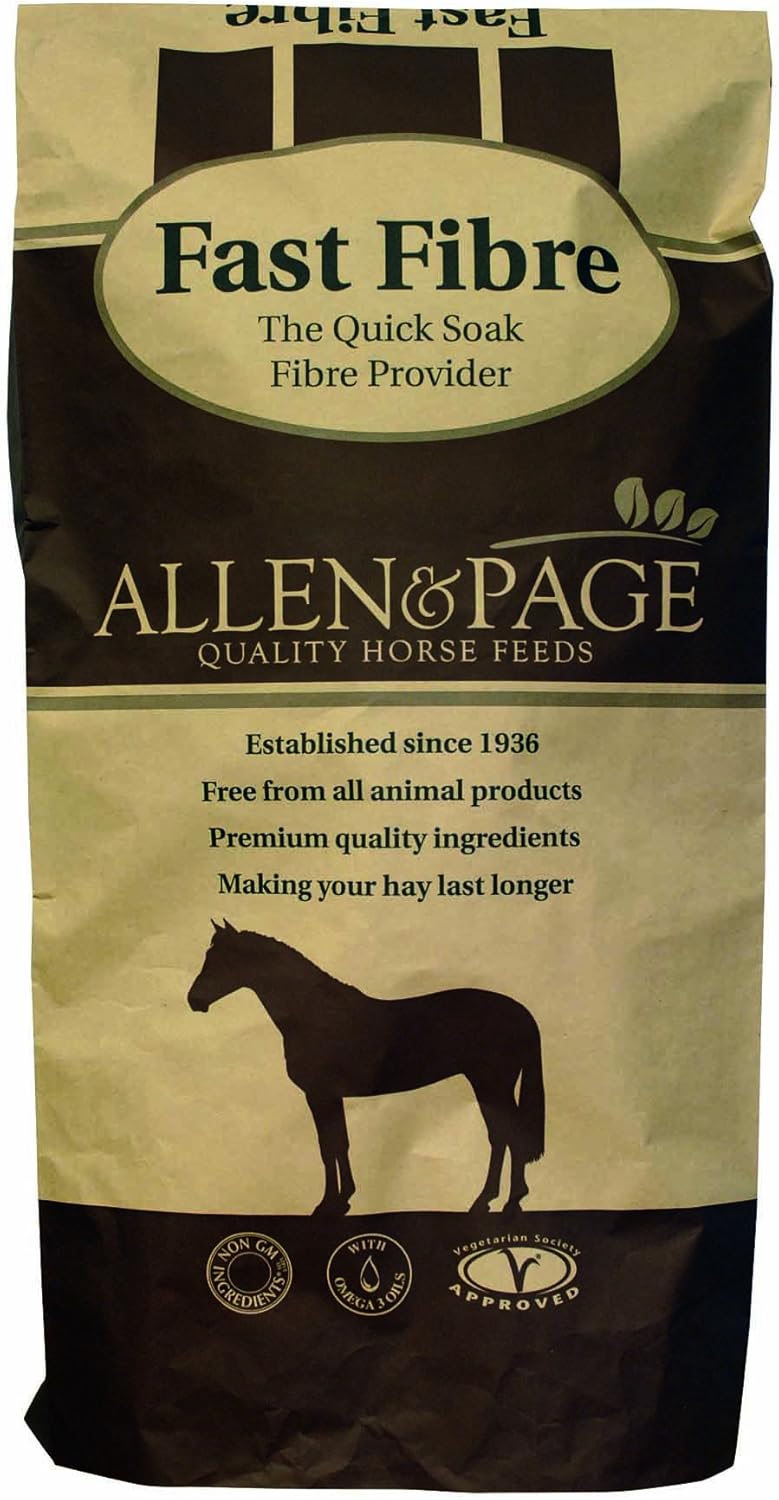About this deal
Laminitis can affect all four feet but the clinical signs are often more noticeable in the front feet. Includes a full range of vitamins & minerals including chelated zinc & copper to help maximise absorption.
Bear in mind that not all laminitics are the typical overweight ponies we usually associate with the condition; some are poor doers or hard working horses that require higher calorie/energy diets. Ingredients like beet pulp and alfalfa are not only high in fibre but they are also an excellent calorie source, containing as much energy as many cereal grains but without the high starch content. Oil is also an excellent source of extra calories that is safe for laminitics; in particular, a linseed meal or oil would be a useful addition to the diet for any horse requiring an energy boost. Linseed is high in omega 3 oils and well known for its excellent anti-inflammatory properties within the body. What causes laminitis continues to be an area of huge research. It has become evident in recent years that although the over consumption of grass or feed high in starch or sugar is still commonly associated with horses developing laminitis, up to 90% of cases have an underlying hormonal cause. Animals that suffer from problems such as: Cushing’s disease (also known as PPID), Equine Metabolic Syndrome (EMS) and Insulin Resistance (IR) will have an increased risk of developing laminitis. Cases of laminitis can vary greatly in their severity and prognosis and whilst every horse or pony has the potential to develop the disease, some are more at risk than others and once an individual has had laminitis they are more at risk of suffering recurrent episodes, regardless of the initial cause.Laminitis isn’t just a spring and summer problem it can occur in the winter too, particularly when horses eat frosted grass. Avoid turnout on days when it is very cold but bright and sunny as the fructan (sugar) content of the grass will be at its highest. Wait until the temperature has risen and the frost has melted before turning out. When feeding Fast Fibre as a partial hay replacer, 1kg of hay is equal to 1kg of Fast Fibre (dry weight). The quantity fed will depend on various factors such as the severity of any dental problems, and also the time of year. During winter, for example, when grazing is limited and reliance on long forage is far greater, feeding amounts will need to much higher to compensate for this. Please call our friendly nutrition team who will be able to help with feeding amounts for your horse or pony. Your horse appears lame and may be reluctant to move, making only small, careful, ‘pottery’ strides. This may be more apparent on a turn or on hard surfaces.
An excellent way of boosting a horse or pony’s water intake, which is especially important for veterans who can be reluctant to drink enough water, particularly in winter Weighing & EID Agriculture Tech AG TECH Handling Equipment Herd Monitoring Grassland Tech Weighing Equipment Cereal & molasses free, high in fibre & low in starch & sugar making it ideal for good doers and those in light work. Fibre is very important in the horse’s diet. Horses are known as hind gut fermenters which means they have a large chamber in their digestive system specifically designed for fermenting fibre. A diet that is low in fibre can lead to a range of health problems for the horse.
Your horse appears uncomfortable and may shift his weight from one foot to another. The characteristic ‘laminitic stance’ with forelegs stretched forwards and weight shifted onto the heels to relieve pressure from the toes is commonly seen. Stabling him on a deep bed of shavings to provide support for the hooves. Do not use straw as your horse may eat it. Perfect for senior horses with poor teeth, especially those who have difficulty chewing long fibre. Fibre should form the basis of every horse’s diet to keep the digestive system healthy and functioning efficiently. A horse’s hind gut is populated with millions of bacteria which break down fibre by fermentation. Starch and sugar are normally digested in the small intestine, but when too much is fed some passes into the hind gut where rapid fermentation by the bacteria causes lactic acid to be produced. This acid production alters the pH of the hind gut and disruptsthe careful balance of gut bacteria. The acidic environment can also damage the gut wall and allow dead bacteria and other endotoxins to enter the blood stream; this causes an inflammatory response in the body resulting in laminitis. Feeding a high fibre diet, particularly one which utilises ingredients such as beet pulp, oat fibre and alfalfa will not only supply the horse with essential nutrients but will also help to maintain a healthy hind gut microflora as well as providing anti-inflammatory properties.
Related:
 Great Deal
Great Deal 